0
£0.00

A candid look at contest struggle, a reset in self-belief, and why his best riding began when he stopped trying to prove it.
Words: Alba Pardo
Photos: Tyler Ravelle
Call it quiet authority. Sebbe de Buck rides with the kind of ease that makes everything look intentional. Craig Kelly once said riding deep powder feels “like flying”… a state of “complete freedom.” That magnet still pulls on snowboarding’s best, and it’s the feeling Sebbe rides for. He took the classic path – contests to build a name, then a turn into filming – to protect that freedom. Here’s where that turn happened, and why.

Sebbe is candid about why the contest lane stopped fitting. “During those last years doing contests, I wasn’t having fun and was doing it for the wrong reasons. My contest career always felt like a struggle, like mostly getting fourth places, not the score I was hoping for… Or I’d have to change my runs to what judges wanted instead of what I wanted to show.” The tension wasn’t just about getting results; it was identity. “Deep down, I may have always known that it wasn’t for me… but it was hard to give up because I knew I had the tricks at that time…I was close to getting medals and being on the podium… to get that confirmation”, he laughs, “ But a lot of times it felt out of my power.”
He hadn’t planned a second Olympic push at all. “I wasn’t planning to go back after my first Olympics. Then, after the COVID lockdown, Beijing looked possible – the federation said I was still in a good position to make the team, so I gave it one more go with future benefits in mind.” And he proved he was still in the mix: fourth at Laax, 13th at Worlds, a fifth in Calgary the next season. Then came the retroactive points change – his ranking slid about thirty places at once, and he missed the Games by a single spot, and the bureaucratic swerve confirmed what his gut had been saying for almost four years. “I did everything I could… it felt like the right time to be like, okay, this is done now,” he says. He stepped away in mid-February – and promptly filmed one of the best parts of his life.
There was another honest layer to it. “The last years in the competitive side were… mentally draining. I had to be honest and admit to myself that I was doing it for the money. At that time, I was okay with it, because it was all for a future after a snowboarding career – that was the reason why I kept doing it. Little did I know it would slowly eat me up from the inside.”
In truth, the longer arc started earlier. Competing was always a means to get his name out as a Belgian rider, secure support, and then film video parts – not the end. Once he committed fully to filming with Beyond Medals, the weight lifted. “Since Bahamas, I can see it in my style,” he says. “Way more fluent, not as stressed… the only pressure left is the one I put on myself and not from outside sources anymore.” The result: more contentment, better boarding, and – ironically – the kind of performances that are remembered.
Ask why he rides now, and the answer is simple enough to be radical: “It’s one of the only times I feel complete freedom… once you’re strapped in in the mountains in the middle of nowhere, everything else drops away.” In filming, he chooses the feature, the trick, the pace. Some days it’s a pow slash; some days it’s “a big-ass booter.” What it isn’t anymore is a countdown clock to next week’s start gate.
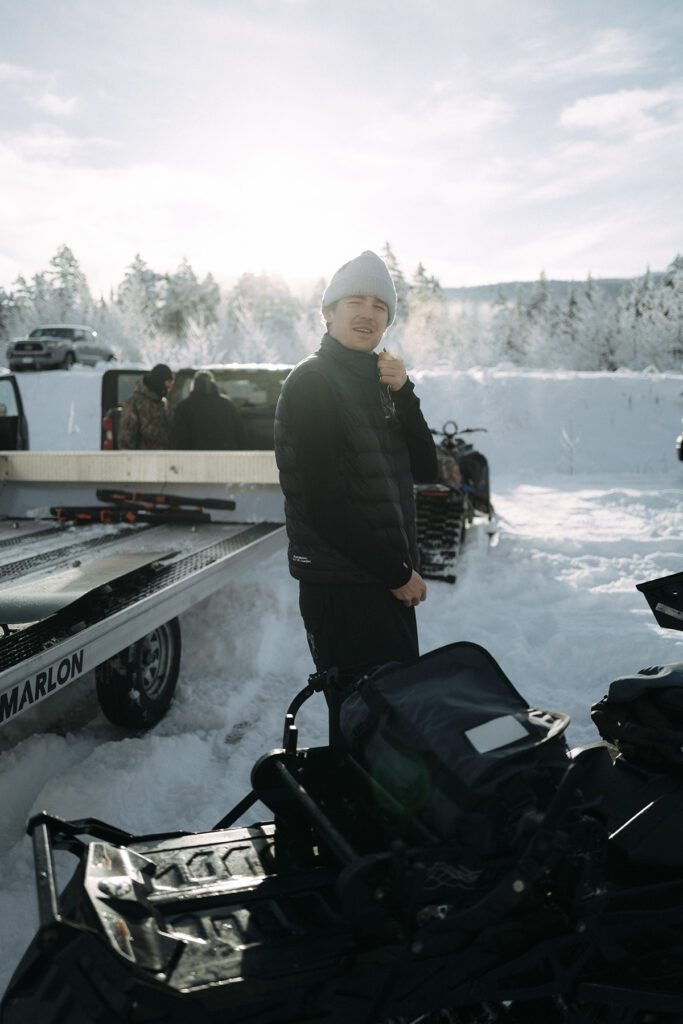
The call to end a season rarely feels clean. For Sebbe this year, it came in Whistler as the snowpack flipped from “on” to “too hot, too sketchy,” and as a series of losses left the Beyond Medals crew hollowed out. He and Kevin Backström looked at the forecast, looked at each other, and chose to close the book at the end of March – earlier than planned, with mixed feelings but a clear gut. “Sometimes you’ve got to listen to your intuition,” Sebbe says. “We wanted to go to Alaska, but we were not in the headspace you want to go there with.”
That headspace had reasons. In the span of weeks, the crew lost Beyond Medals team rider Florian Fischer to cancer; their friend Dingo passed; then Tor suffered a loss in his family. Injuries stacked up – Ulrik broke an arm in Japan, Ludvig broke an ankle in Whistler. “The crew really fell apart a little bit… because of life stuff,” Sebbe says. When the snow turned unsafe and the stomach feeling turned with it, it was time.
Zoom out, and the whole winter never found a rhythm. Japan to Europe to the U.S. to Canada – the crew chased snow and light for months, catching windows in Jackson and Brighton, riding out dead spells in Park City, then resetting in Whistler. “Some trips you build and boom – you have a week of amazing shots… Other times, you’re hustling and you have one day in three weeks where you get clips,” Sebbe says. This was one of those hustle years.
“We still got stuff done,” he says. “But sometimes you’ve got to listen to your gut. There’s wisdom in that restraint. The old impulse – push through, stack clips at all costs – doesn’t survive long in high-consequence terrain. Nor does it fit the way Sebbe now approaches risk.
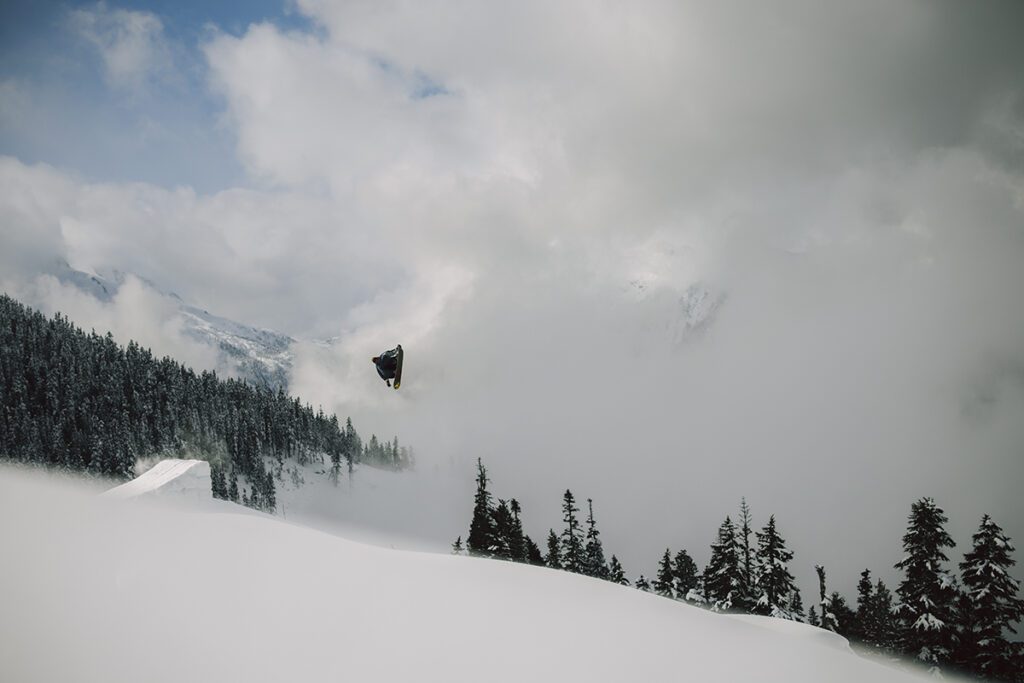
In contests, the course is shaped to perfection, the takeoffs templated. Out there, every decision is conditional. “You kind of make that calculation – ‘Is the risk worth the clip?’ – every day,” Sebbe says. The stars have to align: snow, jump, weather, light, crew. If they don’t, maybe it’s a “filler clip and walk away safe” instead of hucking something half-baked. Those are the choices that keep bodies intact and careers long.
It’s not about fear; it’s about being present. Avalanche education, of course, but also constant radio chatter, and a crew culture that names what it sees – tree-bombing snow, warming temps, daylight left – form a moving checklist. “Being aware of that every time you go out is a big help to preserving your body,” he says.
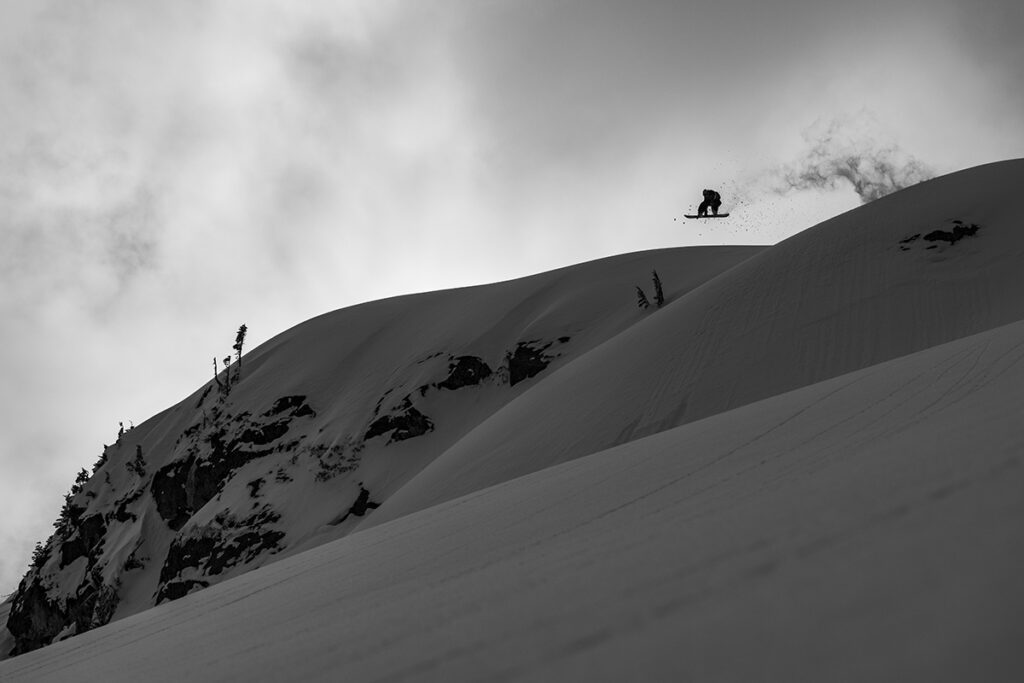
“It’s one of the only times I feel complete freedom… once you’re strapped in in the mountains in the middle of nowhere, everything else drops away.” – SEBBE DE BUCK
In 2022, Sebbe rolled into the Jackson event right after cutting ties with the federation – dream event on paper – but the snowpack had a split personality: dust-on-crust up high, slushy pow at the bottom. On a long, feature-stacked face, he caught himself second-guessing – exactly the headspace he’d worked to leave behind. “I felt so small… I’ve never really done a backcountry run this long, let alone with four or five features in it… and you’re standing next to Travis Rice and all these guys,” he says. “It was so out of my comfort zone.” He adds, “Maybe it would’ve felt different if the conditions would have been like the year before with perfect snow… this time it was scary – so much speed to control because the snow wouldn’t slow you down.”
Beyond the snow, the vibe pulled him back into contest mode. “They might say it’s different… but it’s the same people who did the big contests, and the energy at the top felt similar as an X Games drop-in,” he says. The safety culture is real – “everyone supports each other in the backcountry because you all want to go home safe” – but once it’s head-to-head, “it’s a contest… You want to beat him… It’s still a competition at the end of the day.”
That feeling repeated at the Andermatt duel qualifier against Kevin in 2024. The call from Liam asking him to take part once again sent him into a panic. But he pushed through by telling himself it would “feel like filming” – two friends, one of them advancing, it’s the sort of opportunity you can’t say no to. “We arrived and conditions were horrible: icy, rocky,… but it’s a competition, so you have to do it that day.”I was instantly back into that old mindset: don’t want to ride in these conditions, but I have to. Started second-guessing my skills, causing a downfall in confidence, which got in the way of me showing my best riding,” he says. “I walked away with the exact same feeling I had when on the circuit – a feeling of anger, disappointment, and lack of confidence in my riding, not the feeling I look for when I snowboard…the exact opposite, for that matter.” After Andermatt, he was clear: “I’m over doing this.”
He’s blunt about the timeline. “For me, Natural Selection is not the time and place yet, maybe some day, but for now I’m fully focused on filming and being present doing just that,” he says. Coming from an indoor slope and years of perfectly manicured park jumps, he’s still building the live-line skill set – navigating in big mountain terrain, where to dump speed, how not to white-room yourself – before lining up with riders who grew up on those mountains. That’s not a disavowal; it’s a progression plan.
In 2018, Sebbe was hospitalized for pancreatitis for the first time, a very painful inflammation of the pancreas. He stopped drinking and got prodded for the scary stuff (pancreatic cancer was ruled out). Yet, despite doing what the doctors told him, he was still suffering from flare-ups. After further investigations and more complex tests. He got diagnosed with a genetic mutation that makes him vulnerable to pancreatitis – an invisible, non-negotiable constraint that forced hard changes and harder reflection. So he started listening to his body, to the stress behind the symptoms, to the way external pressure had frayed his sense of self. “I learned how to check in with myself,” he says – sleep, travel load, stress, personal life, health, and overall energy levels – “before I put extra stress on my body.”
The lesson bled into everything. During COVID’s forced pause, returning home and looking around, he could appreciate what he had built for himself, hard-earned while snowboarding – he realized he’d been a pro longer than he ever let himself admit; “It was never enough.” That realization loosened the knot. With contests gone, the underlying stress dropped. Contentment went up. So did the riding. “I’ve felt a lot more appreciation for what I’ve already done,” he says. “I don’t feel the need to put all this crazy pressure to prove myself, and I started to enjoy it even more in the moment.”
It didn’t matter what his peers, or the media, or even the sponsors had been telling him. Until he let it sink in, he didn’t quite grasp the dimension that he “Had been a pro snowboarder” for a long time.
The North Star is still out there: integrate the trick bag he built in parks into real lines on real mountains. Alaska reframed everything. “When I was young, I’d skip the Alaska parts when I watched movies – they were boring,” he laughs. “But now that I’ve been there, it’s like, whoa, this is the pinnacle.” The goal is simple to say, gnarly to do: big tricks, in lines. That’s where he wants to bring his snowboarding.
That doesn’t mean pounding at the door when the weather, snowpack, or psyche aren’t aligned. It means stacking experience, choosing moments, and letting the board say when. It also means trusting the thing that brought him here in the first place: the feeling. If freedom is the metric, the decisions get easier.
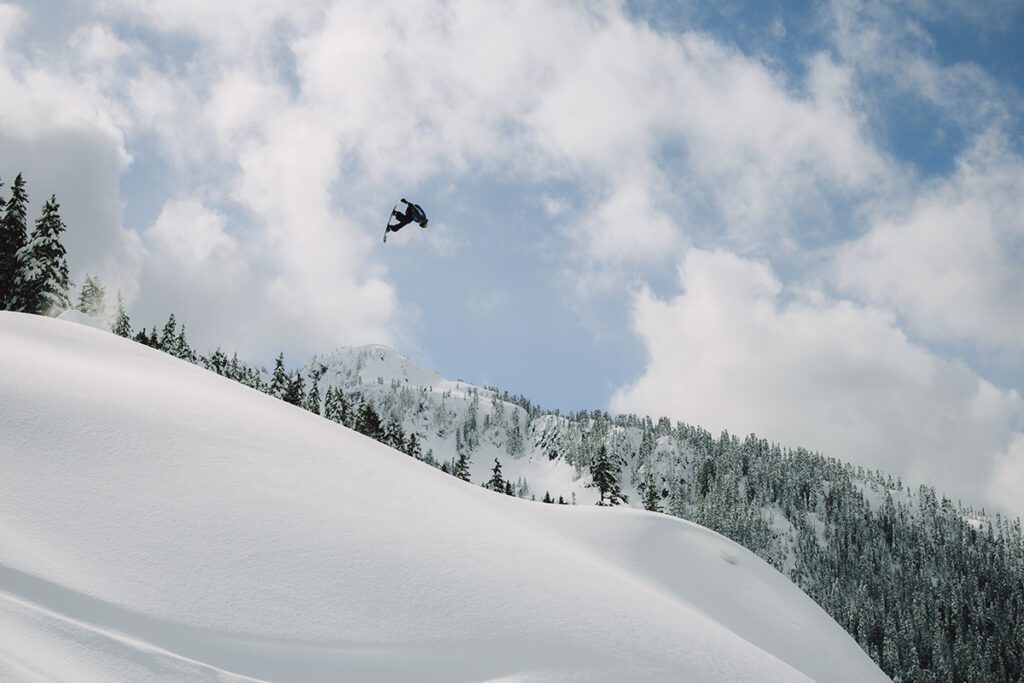
Beyond Medals has been both crew and compass. Early on, when contests still paid the bills, the brand gave Sebbe room to split weeks and chase windows; when he cut the cord, it became home base. The point was never to collect hardware so much as to collect shots worth watching twice. “I always had a nice backing from the sponsors and never really felt pressure from other sides – just myself – to make that decision,” he says. “Looking back, it was the best thing I could have done.”
The irony is that stepping away from external validation often brings the most durable kind. Fans, brands, peers – they’ve watched Sebbe for years. Now he’s watching himself with kinder eyes too.
If you strip away rankings and hashtags and just look at the rider, you see someone at the midpoint of a career – young enough to push, experienced enough to know when not to, and a style that is paramount. You see a blueprint for how a park-bred technician grows into a mountain rider with a long runway, a clean bill of self-respect, and a crew strong enough to survive hard years.
You also see a very human equation: risk traded against meaning; curiosity traded against fear; a winter traded against the rest of your life. In that math, Sebbe’s numbers pencil out. The path is honest, and the compass is steady.
And when the window opens – and it will – he’ll be ready to take it. On his terms.
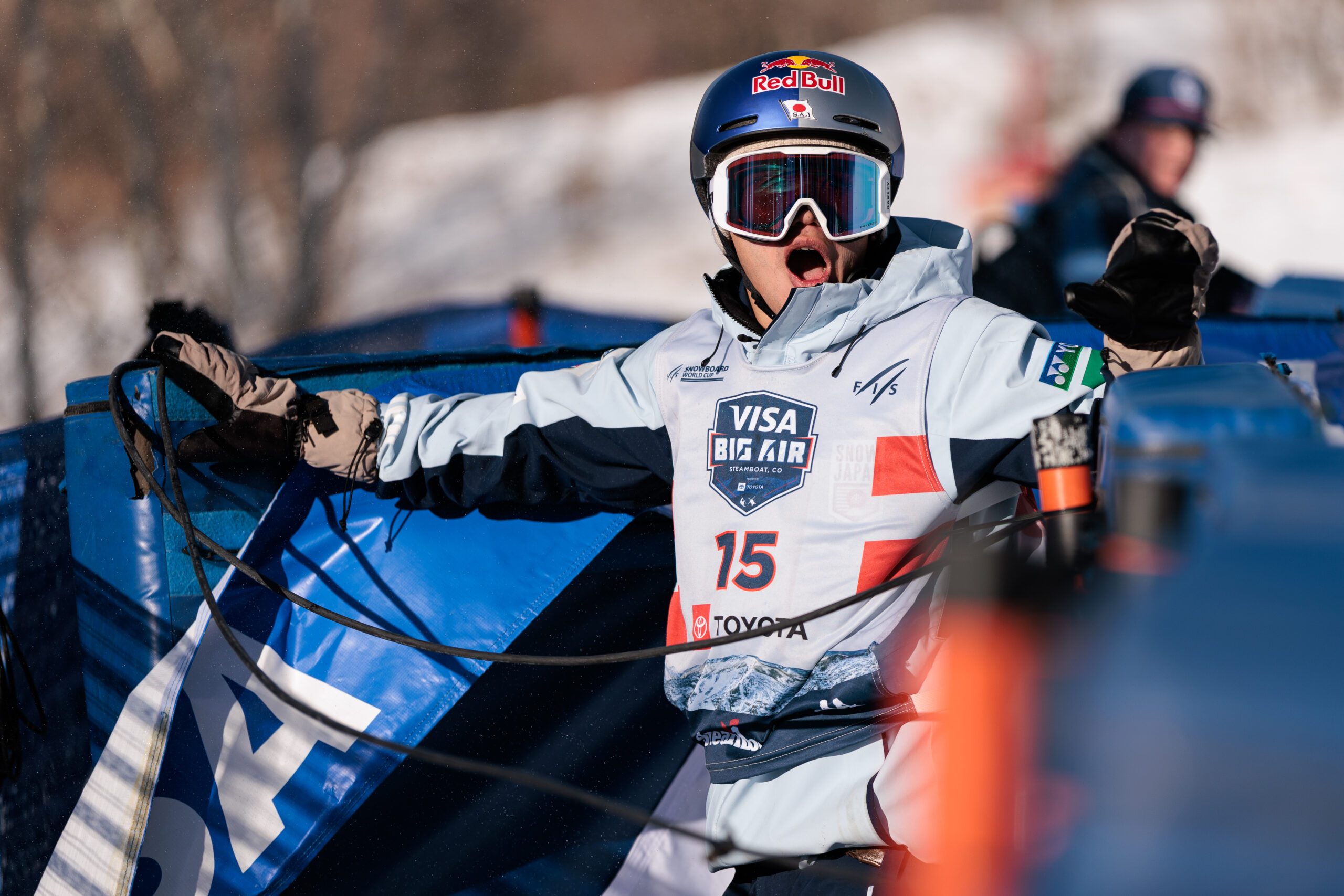
With the Olympic qualification window fully open, this winter is less about
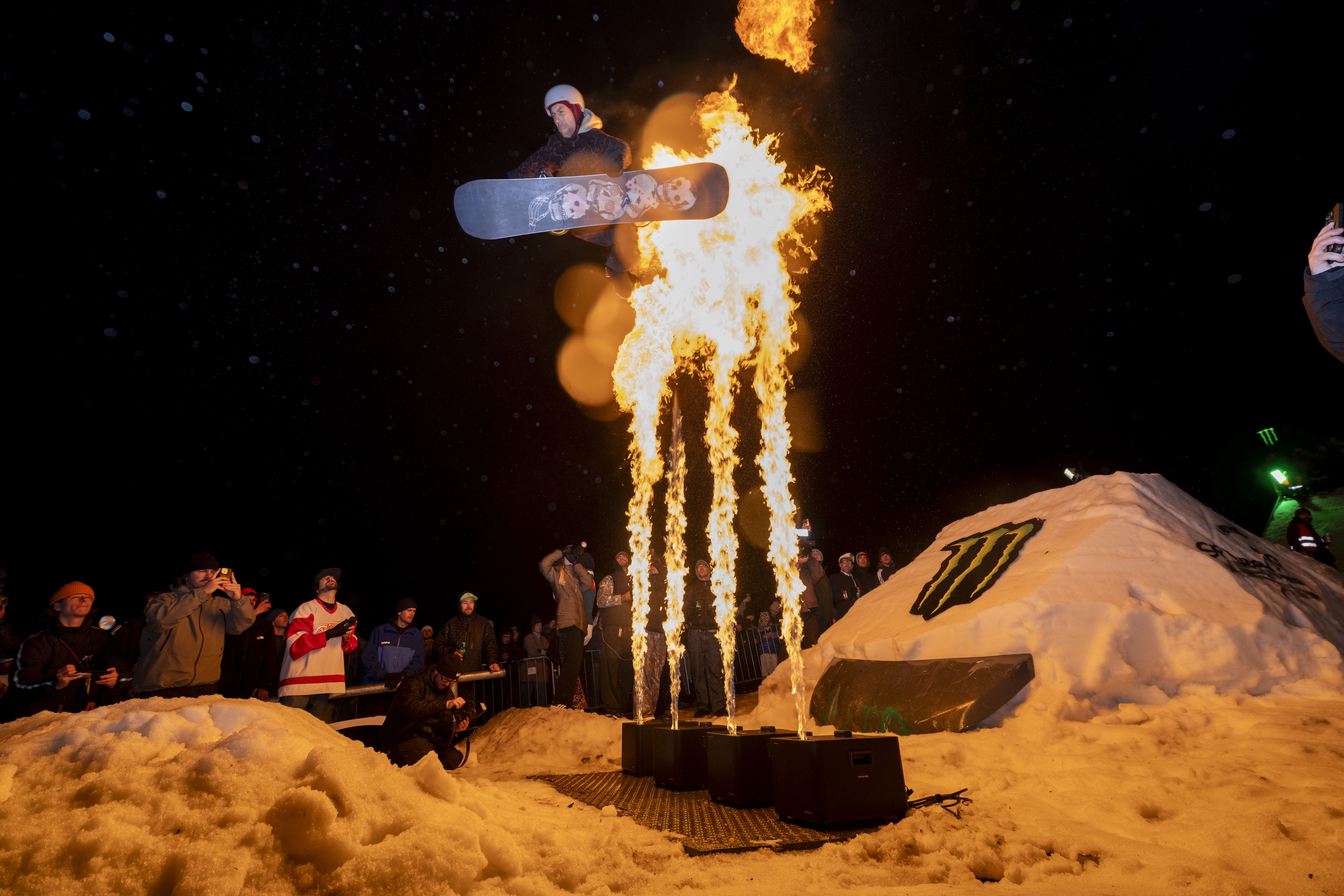
Two Days of Smoke, Sparks & Straight-Up Snowboard Mayhem Krakow didn’t just
Sign up for the very best in snowboard culture, get notified of prize drops, and receive our weekly essential news hit: The Friday Dump.
| Cookie | Duration | Description |
|---|---|---|
| cookielawinfo-checkbox-advertisement | 1 year | The cookie is set by GDPR cookie consent to record the user consent for the cookies in the category "Advertisement". |
| cookielawinfo-checkbox-analytics | 11 months | This cookie is set by GDPR Cookie Consent plugin. The cookie is used to store the user consent for the cookies in the category "Analytics". |
| cookielawinfo-checkbox-functional | 11 months | The cookie is set by GDPR cookie consent to record the user consent for the cookies in the category "Functional". |
| cookielawinfo-checkbox-necessary | 11 months | This cookie is set by GDPR Cookie Consent plugin. The cookies is used to store the user consent for the cookies in the category "Necessary". |
| cookielawinfo-checkbox-others | 11 months | This cookie is set by GDPR Cookie Consent plugin. The cookie is used to store the user consent for the cookies in the category "Other. |
| cookielawinfo-checkbox-performance | 11 months | This cookie is set by GDPR Cookie Consent plugin. The cookie is used to store the user consent for the cookies in the category "Performance". |
| viewed_cookie_policy | 11 months | The cookie is set by the GDPR Cookie Consent plugin and is used to store whether or not user has consented to the use of cookies. It does not store any personal data. |
| Cookie | Duration | Description |
|---|---|---|
| _ga | 2 years | This cookie is installed by Google Analytics. The cookie is used to calculate visitor, session, campaign data and keep track of site usage for the site's analytics report. The cookies store information anonymously and assign a randomly generated number to identify unique visitors. |
| _gat_gtag_UA_189035576_1 | 1 minute | This cookie is set by Google and is used to distinguish users. |
| _gid | 1 day | This cookie is installed by Google Analytics. The cookie is used to store information of how visitors use a website and helps in creating an analytics report of how the website is doing. The data collected including the number visitors, the source where they have come from, and the pages visted in an anonymous form. |
| CONSENT | 16 years 4 months 12 hours | These cookies are set via embedded youtube-videos. They register anonymous statistical data on for example how many times the video is displayed and what settings are used for playback.No sensitive data is collected unless you log in to your google account, in that case your choices are linked with your account, for example if you click “like” on a video. |
| Cookie | Duration | Description |
|---|---|---|
| IDE | 1 year 24 days | Used by Google DoubleClick and stores information about how the user uses the website and any other advertisement before visiting the website. This is used to present users with ads that are relevant to them according to the user profile. |
| test_cookie | 15 minutes | This cookie is set by doubleclick.net. The purpose of the cookie is to determine if the user's browser supports cookies. |
| VISITOR_INFO1_LIVE | 5 months 27 days | This cookie is set by Youtube. Used to track the information of the embedded YouTube videos on a website. |
| YSC | session | This cookies is set by Youtube and is used to track the views of embedded videos. |
| yt-remote-connected-devices | never | These cookies are set via embedded youtube-videos. |
| yt-remote-device-id | never | These cookies are set via embedded youtube-videos. |
| Cookie | Duration | Description |
|---|---|---|
| _pk_id.43969.7c7f | 1 year 27 days | No description |
| _pk_ses.43969.7c7f | 30 minutes | No description |